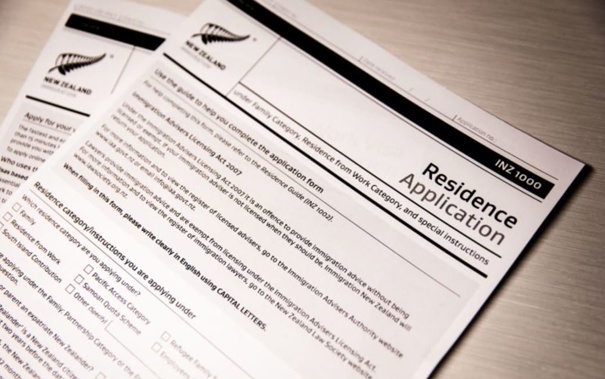
The first move has been made to reduce the number of migrants flocking through New Zealand's borders as the Government amends the Accredited Workers Visa requirements - but immigration experts and Immigration Minister Erica Stanford herself aren't able to stamp down a target figure.
The new requirements for workers entering New Zealand include a particular standard of the English language, a minimum skills threshold for roles falling into level 4 and 5 and an obligation for employers to engage with Work and Income for approval before hiring.
Immigration numbers have spiked to record highs and the coalition Government has long promised to reduce the overflow of people entering the country. But what to limit the number to is still up for debate.
Into NZ is an immigration consultancy, its owner, Katy Armstrong, was asked on Newstalk ZB this morning what she thought an ideal number of migrants would be.
"I'm going to start sounding like a politician, aren't I - because I don't know," Armstrong said on The Mike Hosking Breakfast.
"I think the thing is we need this GPS that the ministers talked about. We need that big look at where we're going with our infrastructure because it's absorbed its capacity. You've got Hamilton - the fastest-growing city that can't grow because they're pipes are no good ... you can't have migrants stream in if you can't deal with basic infrastructure.
"We need that GPS. Then numbers should settle themselves."
Stanford was asked the same question this morning - whether she was able to specify the target number of migrants that should be entering the country each year.
She said she was unable to provide a figure and admitted the Government hadn't been able to provide one to her when she asked.
"I've asked immigration about this, even they're a bit cagey about giving a proper number," she told Mike Hosking.
"But if you look back [at] the peak of the [John Key] Government, the highest we got to was about 64,000, and last year we hit 135,000 - I expect it will be revised up to about 145,000 when the numbers come in properly. That is far too high."
However, Stanford said the key statistics behind immigration wasn't the blanket number of people entering the country, but the make-up of the migrants themselves. She noted half the migrants brought in were low- or un-skilled, and while the previous Government tried to switch the balance, Stanford said they were unsuccessful.

"We have to bring back some other settings to make sure that we're encouraging nurses, doctors and teachers to come in, and putting jobs for Kiwis first."
Asked if New Zealand was still a magnet for skilled overseas workers, Stanford said the immigration settings were being changed to allow the country to still remain attractive for people looking to immigrate.
An example she pointed to was immigration amendments made last week to fast-track the visas of teachers. She said the Green List will continue to be used as a tool to encourage the right workers to cross New Zealand's border.
"But the big thing for this Government is, actually, we have to fix the economy," the minister said.
"We have to grow the economy and make sure our public services are in a reasonable and fixed state, we have to make sure crime is down because those are the things migrants consider when they move here. [Crime figures] came down under the John Key Government and we'll do it again."
Armstrong said the latest visa amendments would have a flow-on effect for business owners, who will now be required to follow more processes to bring migrants on board.
She recalled her experience following through Work and Income processes and claimed she couldn't recall a time a report said "there was a suitable New Zealander".
"The mere fact you're going to push employers to go to Work and Income again might get the odd person back into work," she said, referring to those currently unemployed and receiving benefit.
"The word is 'suitable' - and that's what is going to be battled out. Because suitable to me actually involves various components," Armstrong said. But look, Mike, the thing is, I reckon the next step the Government should probably say is to think of rewarding good employers because this does feel quite stick-like.
"We've been saying this for a long time - there needs to be built-in incentives for good employers to fast-track their applications."
The Accredited Employer Work Visa scheme, established in July last year, has approved nearly 81,000 visas among about 27,900 accredited employers. It was meant to counter exploitation by ensuring employers were viable and treated their employees fairly, with pre- and post-accreditation checks.
Take your Radio, Podcasts and Music with you









